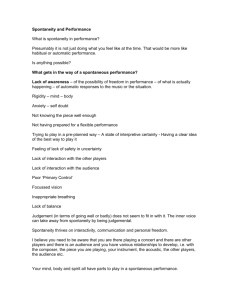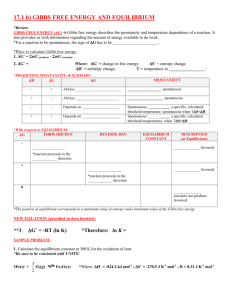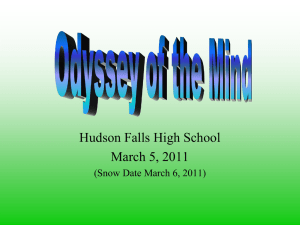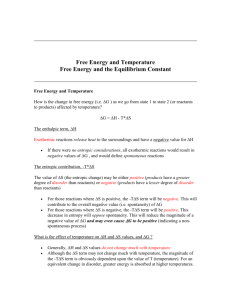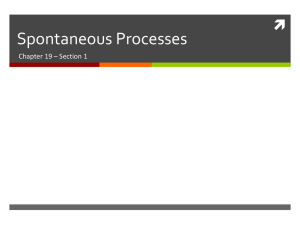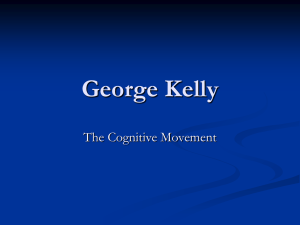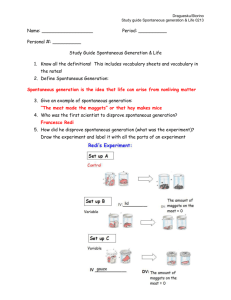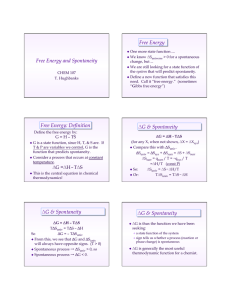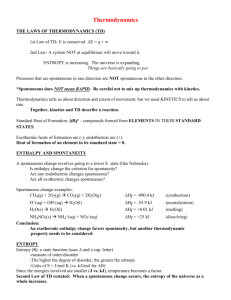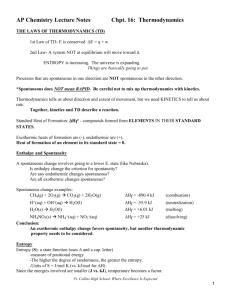Spontaneous Music Making in the General Music
advertisement
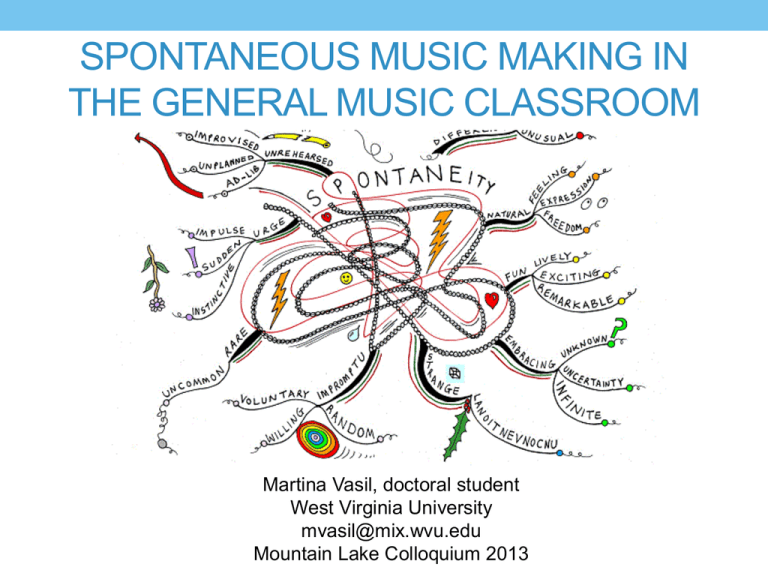
SPONTANEOUS MUSIC MAKING IN THE GENERAL MUSIC CLASSROOM Martina Vasil, doctoral student West Virginia University mvasil@mix.wvu.edu Mountain Lake Colloquium 2013 Overly rigid and sequenced instruction can have a negative impact on learning (Benedict, 2009) • Children’s musical cultures are unique • Children may react in various ways to musical stimuli • Honoring and using children’s perspectives of music, “this is the root from which all later musicality can grow and flourish” (Moorhead & Pond, 1941) • Imperative to music teacher education So…how DO children make music? Jackson Pollock, Lavender Mist: Number 1, 1950. Oil on canvas, Oil, enamel, and aluminum on canvas; National Gallery of Art, Washington, D.C. Creative music making • Investing objects with a new form; creating rather than imitating (Merriam-Webster, 2012) Improvised music making • Composing, reciting, arranging, making, or playing impromptu (Merriam-Webster, 2012) • An improvised response “puts the full responsibility for the music being made on the person/s making it, and for the entire duration of its making” (Curran, 2006, p. 483) Spontaneous music making • Voluntary or involuntary actions or movements (Merriam-Webster, 2012) • Natural impulses, physical/emotive responses to music (Bereson, 2005) Responses that are not teacherdirected Which one are YOU doing? 1. Creative 2. Improvised 3. Spontaneous "Musiciens aux masques” by Pablo Picasso 1921, oil on canvas. New York, NY. The Museum of Modern Art Spontaneous music making • How would children engage in spontaneous music making? • How would the teacher respond to children’s spontaneous music making? How did children spontaneously make music? • Rhythmic responses Raindrops, raindrops, fall-ing down Rain on the green grass Rain on the trees Rain on the rooftops But not on me “Old King Glory” • Vocalizations (sung words, solfège patterns, spoken dialogue) “Rain coming down from the clouds” “Sol mi sol mi do” “Hmmmm hmm hmmmm” • Spoken Responses “I’m listening for the beat” “Play it again!” “That’s a hard rain” “Nice to meet you” “Hi, how are you?” “Hello! Hello!” • Rhythmic movement • Exploratory movement • Pretending • Modifying • Props Teacher response to spontaneity Ask for ideas Teacher as facilitator Student cues ENCOURAGING Student choice Active learning Safe environment How can this help? Develop new ideas for classroom experiences Incorporate student interests and skills Use spontaneity to: Understand how children learn music Promote student ideas Understand how children learn music Incorporate student interests and skills Develop new ideas for classroom experiences Promote student ideas • Rhythmically • Rhythm vs beat • Ostinatos • Vocalizations • Invent songs • Experiment with solfège patterns • Choose a melody to hum while lining up for class • Spoken responses • Students have time to discuss what they hear • Time for improvised dialogue and interaction with stimuli • Rhythmic movement • Encourage rhythmic movement during imaginative play • New ways to do rhythmic patterns • Exploratory movement • Play with props • Free movement to music How understanding spontaneity can benefit music teacher education programs • Contribute to the literature • Improve preservice music teacher preparation • Spontaneous music making can provide clues for the next steps in instruction • Spontaneous music making can provide exciting variations to lesson plans • Encouraging student ideas + offering students choices= • • • • • safe environment Flexibility is necessary Use varied stimuli High energy and special needs children may display more spontaneity Be more inclusive of students with lots of spontaneity Spontaneity (or lack of) does not impact musicality
